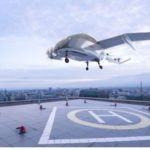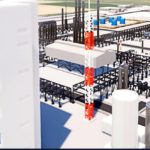The International Air Transport Association (IATA) has published its criteria for the use of COVID-19 testing in the travel process.
The criteria states that governments choosing to introduce COVID-19 testing for travellers arriving from countries considered as high risk must deliver test results fast, be able to be conducted at scale, and operate to high rates of accuracy. IATA adds that testing must be cost-effective and not create an economic or logistical barrier to travel.
The International Civil Aviation Organization (ICAO) has published Takeoff guidance which is the for global governments to follow in reconnecting their people and economies by air. Takeoff outlines layers of measures to mitigate the risk of COVID-19 transmission during air travel and the risk of importation of COVID-19 via air travel. The guidance states that COVID-19 testing should not be a necessary condition for re-opening borders or resuming air services.
IATA has also noted that technology for rapid point-of-care Polymerized Chain Reaction (PCR) testing, which detects the virus in the body. could be a useful layer of protection for travellers from countries considered as higher risk, potentially removing the need for more intrusive measures such as quarantine which would create a major barrier to travel and the recovery of demand.
Speed, scale and accuracy are critical factors
Alexandre de Juniac, IATA’s Director General and CEO said: “Airlines are committed to reducing the risks of COVID-19 transmission via air travel and COVID-19 testing could play an important role. But it must be implemented in line with ICAO’s global re-start guidance with the aim of facilitating travel. Speed, scale and accuracy are the most critical performance criteria for testing to be effectively incorporated into the travel process.”
As part of the travel process COVID-19 testing would need to be conducted by trained public health officials and meet the following criteria:
- Speed: Testing results should be delivered quickly, with results available in under an hour as the minimum standard.
- Scale: If testing takes place at the airport, testing capacity of several hundreds of tests per hour must be achievable. The use of saliva for taking samples rather than nasal or throat swabs would facilitate this and would also be expected to reduce time and improve passenger acceptance.
- Accuracy: Extremely high accuracy is essential. Both false negative and false positive results must be below 1 per cent
IATA has stated that the ideal would be for COVID-19 testing to be required in advance of arrival at the airport and within 24 hours of travel. Passengers arriving “ready-to-fly” would reduce the risk of contagion in the airport and enable early re-accommodation for any traveller who tests positive.
If testing was required as part of the travel process, IATA recommends it would be carried out at departure. Governments would need to mutually recognize test results and data transmission should take place directly between passengers and governments in a similar manner as e-visa clearances are currently handled.

